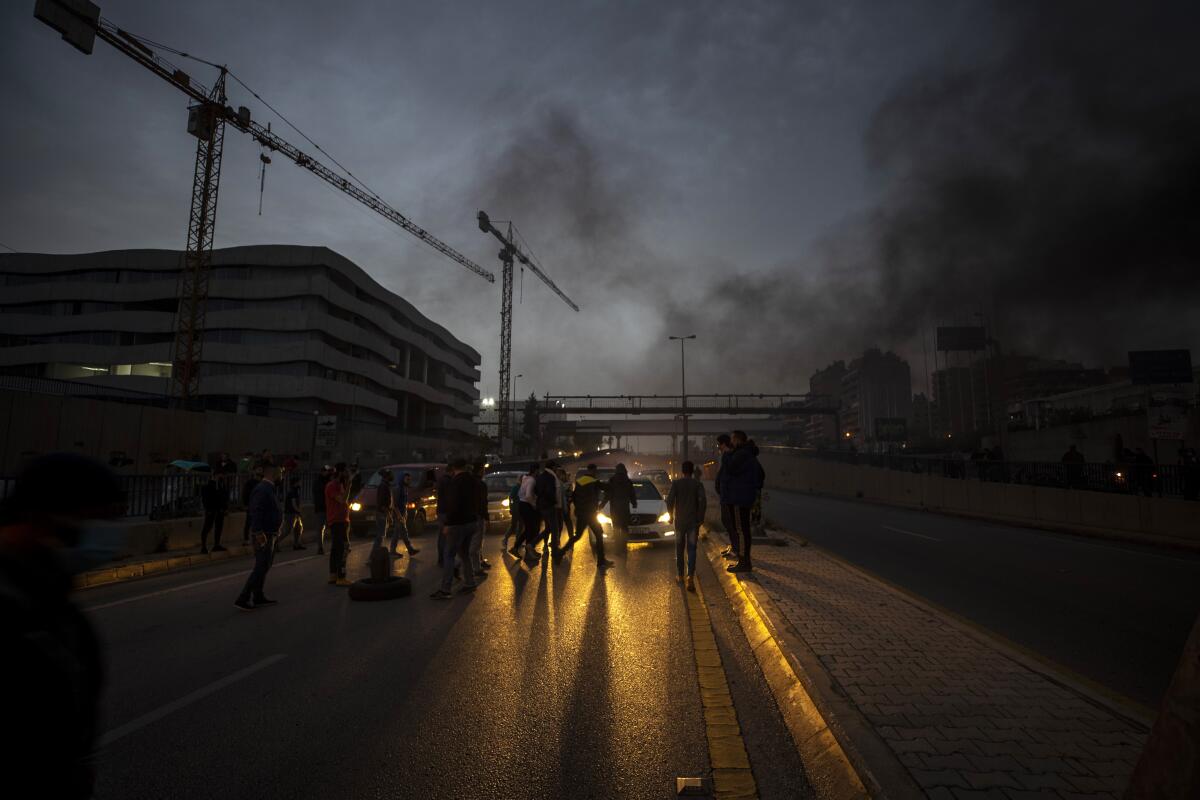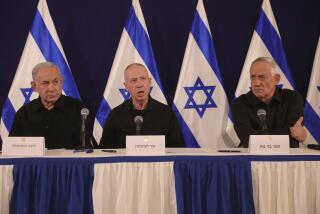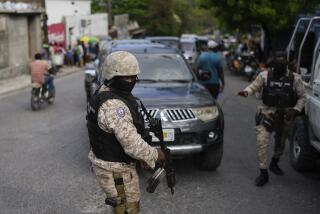Talks in Lebanon on forming a new Cabinet break down, heralding more collapse

- Share via
BEIRUT — Protesters blocked some roads in the Lebanese capital with burning tires Monday after talks on the formation of a new Cabinet broke down, heralding more economic and financial collapse for the small Arab country.
Prime Minister-designate Saad Hariri made the announcement following a short meeting with President Michel Aoun — a last-ditch effort at repairing a rift that has impeded formation of a government tasked with halting the country’s rapid economic collapse. Hariri placed the blame squarely on Aoun for the months-long delay, accusing him of insisting on acquiring veto power for his allies in the new government.
Hariri, who was tasked by Aoun with forming a Cabinet five months ago after he was named by a majority of lawmakers, is seeking to form a Cabinet of technocrats — or nonpartisan specialists — while Aoun has asked for an expanded Cabinet of at least 20 ministers. Meanwhile, the country has been adrift with only a caretaker government in charge as it slides further into an economic abyss.
Speaking with reporters at the presidential palace, Hariri said Aoun had sent him a proposed list of Cabinet ministers, with veto power given to his alliance, asking him to simply sign off on the names. He said he rejected that request as unconstitutional and returned the list.
“The prime minister-designate’s job is not to fill in lists from anyone, and it is not the job of the president to form a government,” Hariri said.
Aoun’s office strongly denied the claim that the president sent Hariri a list with names, suggesting that it was clear Hariri did not wish to form a government for reasons that had nothing to do with its makeup. According to the constitution, the president can suggest names to the prime minister-designate, who is ultimately responsible for forming a Cabinet.
Aoun was elected to a six-year term by parliament in 2016 after Lebanon had been nearly two years without a president. He is an ally of the Iran-backed Hezbollah group. Hariri, who has worked closely with Hezbollah before, is locked in a power struggle with Aoun’s political party and is under pressure to exclude Hezbollah from a future Cabinet.
The public spat came days before Aoun had called on Hariri to form a government quickly or step aside, to which Hariri suggested that Aoun himself should step down. The rhetoric illustrated how dangerously intractable the political crisis in the country was even as it was on the verge of bankruptcy.
There is no legal avenue for the president to fire the prime minister-designate, who was chosen to the post by a majority of lawmakers. It is not clear what would break the stalemate, which many fear could translate into violence on the street as tensions come to a boil.
The Lebanese pound fell against the dollar on the black market Monday after the Aoun-Hariri meeting failed to produce a breakthrough. Small groups of protesters used garbage containers to block several main roads in Beirut. Outside the central bank on the capital’s Hamra street, protesters set fire to trash in containers and knocked them over to block the street.
The economic and financial crisis roiling Lebanon is the gravest threat to its stability since the 15-year civil war ended in 1990.
The country’s local currency has been in a free-fall since late 2019, losing over 90% of its value. The government defaulted on its foreign debt last year, and nearly half the population has been pushed into poverty and unemployment.
Prices of basic goods have increased, and inflation has soared. Banks have imposed informal controls on people’s savings, and the Central Bank’s foreign reserves have shrunk in a country dependent on imports.
The outgoing government resigned in August, following a massive explosion at Beirut’s port that killed 211 people, wounded more than 6,000 and damaged entire neighborhoods in the capital.
More to Read
Sign up for Essential California
The most important California stories and recommendations in your inbox every morning.
You may occasionally receive promotional content from the Los Angeles Times.










